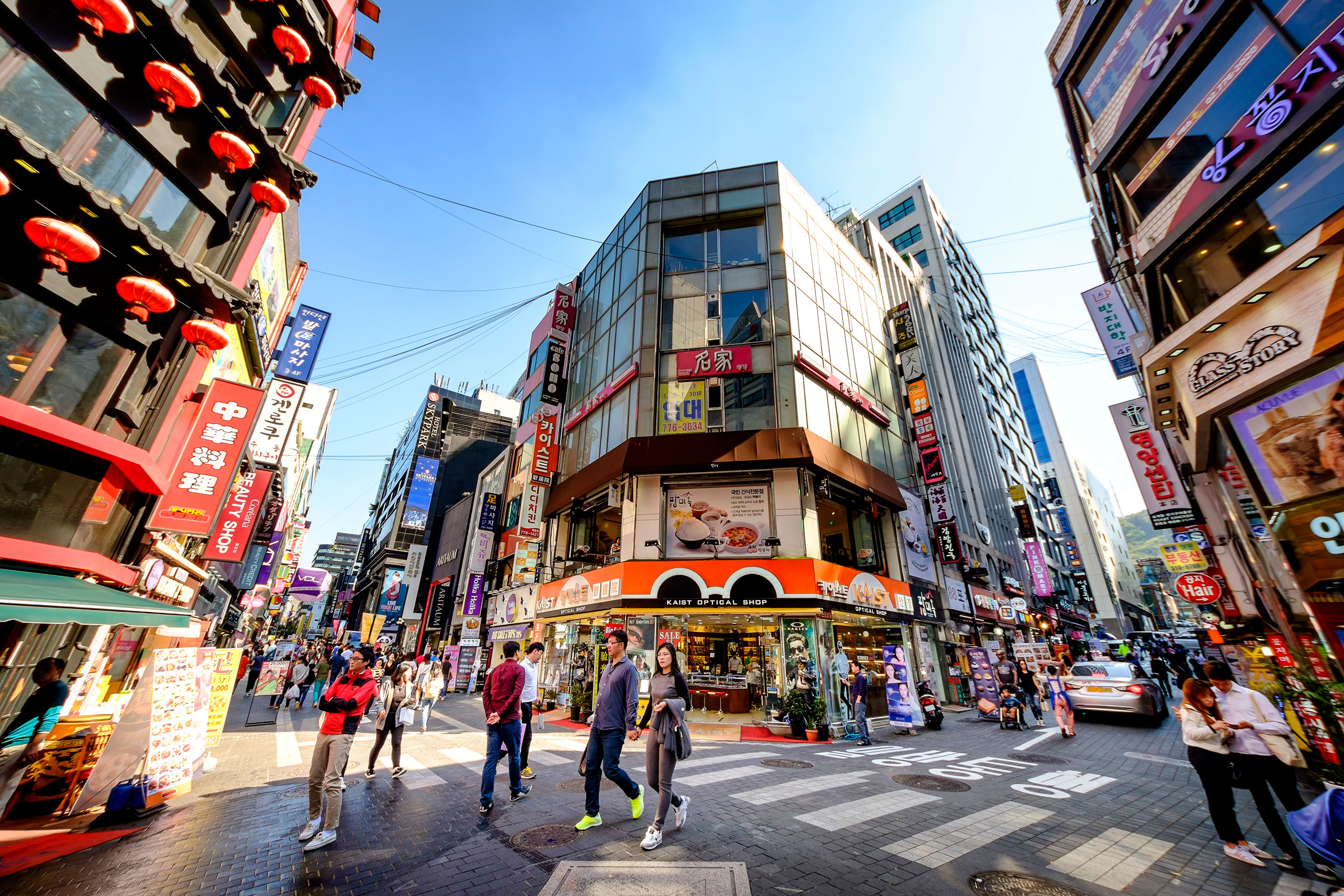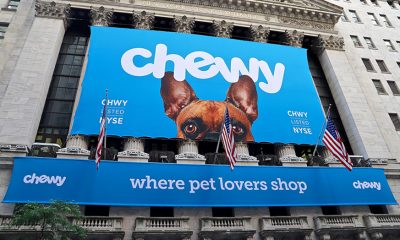
Brand Crazy in Korea
Isolation, aspiration, and competition shape young Koreans' attitudes toward Western and Korean brands.
Published
14 years agoon
By
BXP StaffBXP, formerly Package Design magazine asked three experts in the field to share their insights into the rapidly changing economic and brand landscape in South Korea.
Building Trust in Korea
By Ted Mininni
IN RECENT YEARS, Korea (South Korea) has moved away from a centrally planned, government-directed investment model economy toward a more market-oriented one. With the recent implementation of economic reforms since its 1998 recession, South Korea has made tremendous progress on many fronts. This includes a focus on corporate branding initiatives for the country’s top consumer goods manufacturers in key industry sectors like electronics and automobiles.
Koreans favor their own brands in certain categories, and foreign brands in others, depending upon the age group of the consumer. Koreans have some stunning examples of great brand successes, such as Samsung and Hyundai, which have invested heavily to develop their own brands and who understand that the corporate brand is such a valuable asset that it adds substantially to the book value of the company. At Samsung, for example, the corporate brand is now considered to be one of the chief assets of the company.
Korea has had to develop brand strategies with its global focus now firmly fixed on the consumer products marketplace–not only at home, but abroad. It has done so in a relatively short period of time. Other than Japan, Korea is the only Asian country that has adopted corporate brand management effectively. Unlike consumers in China and Japan, who are eager to purchase foreign brands, older Korean consumers have historically preferred to purchase Korean products, equating that with patriotism, and preferred to remain suspicious of Western brands. In order to build trust with these consumers, American and European product manufacturers in the recent past had decided to create Korean brand names. Today, that is far less common, though the marketplace is still unique and filled with unusual consumer demographics.
Young Koreans, who have had the advantage of higher levels of education and Western travel, are much more brand conscious, as their counterparts are in China and Japan. Young Koreans have spurred much more consumerism in the country, and a far greater acceptance for, and influence by, Western brands. This interesting manifestation has led to a phenomenon that many Asian marketing experts refer to as “consumer polarization” in Korea’s population which can be considered as largely middle class.
AdvertisementKoreans are sophisticated, educated, and intelligent, and they are brand savvy. Koreans are not slavishly brand loyal, yet they are not brand averse, either. Like other consumers throughout Asia, status is an important purchase motivator. Korean consumers are particularly sensitive to issues of honest brand communications, significant information on packaging, and building slow, meaningful brand relationships over time. In other words, Korean consumers’ trust must be earned.
Features and benefits are very important in Korea and must be properly expressed, and satisfaction is key. Distinctive packaging garners attention and sales. The equation: quality products should come in quality packaging. Korean consumers are sensitive to color, materials and design in packaging. Due to limited space in Korean homes, excessive packaging is often eschewed. The diversification of the marketplace, similar to the different U.S. outlet channels, will challenge global brands to develop packaging that builds trust with Korean consumers in any environment.
Ted Mininni is president of Design Force, a brand identity and package design consultancy, and can be reached at tmininni@designforceinc.com.
Aspiring to What Brands Represent
By David Becker
BRANDING PLAYS a very critical role in the Korean economy, because it plays an important role in the culture. What is true about the importance of strong branding in the U.S. is doubly true in Korea.
Koreans have been known to pay two or three times as much for a Western brand simply because what that product evokes. For them, paying extra for the brand provides a window on the world–and an identity–that they might be able to get anywhere else. These coveted brands were once mostly Western brands, but now more and more Korean brands are taking Western brands’ place in Koreans’ hearts and minds.
AdvertisementThe story of automobile manufacturing in Korea illustrates the two sides of the story. In order to boost their own automotive industry, in the ’80s and ’90s the Korean government imposed 100% or more levy duties on foreign brands. However, Mercedes and Volvos were still coveted–and bought. Today, the top-of-the-line Hyundais are beginning to lessen that urge to go beyond their own shores.
Once known as the Hermit Kingdom, Korea is a homogenous society that was long isolated on a peninsula with its only land border against the adversarial China. Today, the society is simultaneously engaged with the world and isolated from it. The engagement has turned to their advantage as the high value they have put on things abroad has driven them to internalize technologies and ideas and try to improve upon them. The remarkable rise of the Samsung electronics products is just one example of the current Korean ambition.
It is also Korean’s affinity for anything new, simply because it is new, that drives the culture. The rapid national economic growth and quickly shifting internal economics feed this fire. In addition, Koreans may be more engaged with the world than most cultures thanks to an ambitious plan to wire the whole country with broadband internet. Currently three-quarters of all Korean households have broadband, always-on internet connections.
Still today, Koreans aspire to brands for the purpose the brand represents, almost a deep-seated longing to connect with another culture, or different lifestyle, or an alluring dream world. It may be because of their understanding and appreciation for the power of brands that supports their current resolve to building brands through strong communication in packaging and positioning worldwide.
Korea’s hard work ethic also means that when they do embrace something, they do it whole-heartedly. The perfecting and promotion of brands is just the natural pinnacle of a quick climb up Korean industries from steel, ships, cars, electronics, cell phones, to plasma televisions. I don’t see the Korean belief in brands going away any time soon.
Companies that wish to penetrate the Korean market have to realize that the ultimate extension of their brand is going to be the package. Like the Chinese, Koreans take pride in great attention to detail, where small accents can have a big significance. Therefore, it is important to have consistent quality in the brand message. But if you can tap into the culture with a strong message, Korea’s unity of focus can pay back significant dividends.
AdvertisementDavid Becker is president of Phillippe Becker Design, and can be reached at info@pbdsf.com.
The Asia Color Conundrum
By Davis Masten
IN A RECENT global study on perceptions of color in countries around the world, some interesting findings showed that Asia is impossible to generalize about, and Korea is quite different from both Japan and China. This study was the first part of a series called Global Market Bias, which examines a range of underlying forces that influence brand-driven global markets. The research was conducted jointly by three firms specializing in global marketing: Cheskin, a research and consulting firm based in California; MSI-ITM International, an expert in online research based in the Netherlands; and CMCD/Visual Symbols Library, a global photography resource based in San Francisco.
There is more dissent than agreement within Asia as to what colors mean. The Chinese, Japanese, and Korean respondents were often strikingly at odds with each other, and often in different ways. Japan and Korea took turns being more similar to China than to each other. Koreans today think “technology” since they associate blue with Samsung, but their take is more about freshness and innovation. They strongly associated water with the color blue, suggesting perhaps a more fluid and dynamic association with technology.
Koreans are unique in the world in their association of red with innovation, a possible side effect of their association of red with the LG company. The international LG chemical, electronics, and telecommunications company, formerly Lucky Goldstar, was founded in Korea. Thus, while in China red evokes traditional images, Korea connects red to the future and technology.
The Koreans associate green with being environmentally friendly and also with reliability and high quality (but not the Japanese). Black is rated consistently throughout Asia in association with high quality and tends to be associated with cars and electronics. Yellow is typically thought of as a happy color in Korea, but it also generates a strong association with weakness. Other parts of the world have some association of weak with yellow but not nearly as strong as in Korea.
Koreans are visually literal and logical in their associations of products and categories with color. It makes perfect sense that vegetables are associated with green, water is blue, and fruit is orange–nature’s products associated to their natural colors. As an extension, the Korean Air brand and airplanes are sky blue.
Among man-made products, black and white generate the strongest associations in Korea. Black is for automobiles, electronics, and cola, and white is for clothing and cosmetics. Koreans strongly associate color with emotions and sensory attributes, more so than with products and brands. Blue is associated with fresh, hope, and cold. Yellow is associated with sunny and friendly. Over half of the Korean respondents associated white with prestigious, weak, and reliable.
What can this tell us about packaging in Korea? Designers and companies developing packaging for Korean consumers should first consider the emotional elements they are trying to communicate, matching them to the colors that communicate those emotions. Making this connection should help prevent disconnects between the message and the packaging.
Double check product and color associations to make sure that the color plays to the category. Then, make sure that the color is not strongly associated to a competitive brand. It is always important to include pre- and post-design packaging research to make sure that you are on the right track.
Davis Masten is chairman of Cheskin, and can be reached at davis@cheskin.com.

BXP elevates the value of innovative and collaborative brand package design as a strategic business competence across the omni-channel path to purchase, to ultimately help consumer facing and retail brands deliver more relevant experiences that connect with shoppers, win at shelf, own the moment of sale and maximize brand loyalty.
SPONSORED VIDEO
Branding with Ferocity – Thinking Like an Indie Brand
Get a better understanding on how to leverage new technologies to engage and delight shoppers, sustainability’s role in product and package design – being sustainable and premium are not mutually exclusive, plus best practices and tips for collaboration and how to launch new products and refresh existing product line-ups and brands.
You may like
Advertisement

GO MINIMALISM . . . HOLD ON A MINUTE!
Sustainable, 100% Recycled Transparent Sheeting is Now a Reality!

Kroger, Walgreens to Dedicate Section of Their Stores to Reusable Packaging

6 Marketing Tips for Ecommerce Brands to Win the Holiday Shopping Season

New Wunderoots Branding Celebrates the Carrot

Fact or Fiction? The Truth about Eco-Friendly Packaging

BXP May 2021 Think & Clink

Unilever Raises Bar for Accessibility with Degree Inclusive

Crown Royal’s Limited-Edition Pack Designed by Oscar-Winner

Coca-Cola Explores World of Paper Bottles
Subscribe

BULLETINS
Get the most important news and business
ideas from BXP Magazine's news bulletin.
Latest Tweets
Advertisement








